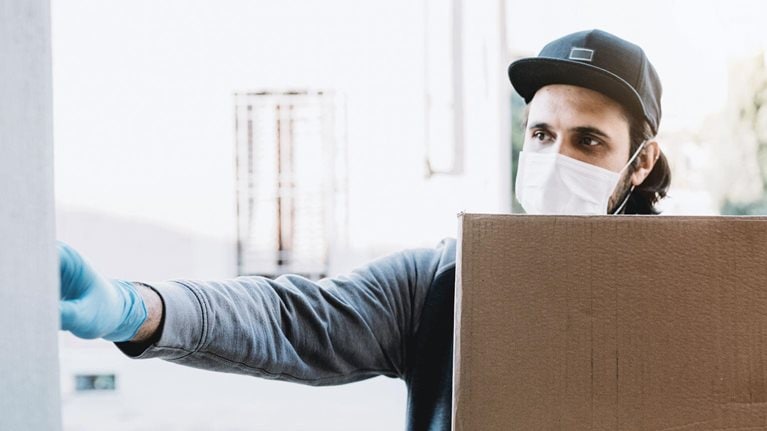In times of crisis, customers gravitate to vendors and offerings that they know they can trust and that help them feel safe. It’s a preference that Ted Doheny, president and CEO of packaging-solutions company Sealed Air, has endeavored to meet during the COVID-19 outbreak, in line with the company’s purpose statement, “We are in business to protect, to solve critical packaging challenges, and to leave our world better than we found it.” As Doheny told McKinsey’s Rodney Zemmel in a recent interview, “The first part of our statement of purpose has become more important than ever. In today’s [COVID-19] environment, we’ve opened up the aperture to what ‘protect’ means.” Doheny also talked about the ways in which COVID-19 has sped up trends in the packaging industry, such as the use of automation and the uptake of e-commerce, and how Sealed Air is adapting to them. His edited remarks appear below.
Accelerating automation to increase safety
A key part of our purpose statement talks about solving critical packaging challenges. Through the crisis, businesses were shut down all over the world. And so right away we were with our customers in the areas where we produce our products. We went from essential to critical pretty quickly, asking, how can we help get the right products into those facilities? How do we do it safely?
Before the crisis, we were focusing on automation because our customers had labor scarcity. They couldn’t get people. We made a pretty large acquisition, $500 million, buying a company called Automated Packaging Systems. Now that’s perfectly aligned to where the industry was going—keeping people out of harm’s way.
We’re also making automated packaging systems for masks. It’s a new business for us. How do you get the 300 million masks that are now required just in the US? We have automated packaging systems that are helping enable those really large numbers.
Also, with e-grocery, we’re seeing acceleration. When you go to a grocery store, you’re waiting for your pickups. How are they being picked, packed, and shipped? Some automation is shifting for us in that area as we speak.
It’s changing the relationship: what we’re selling, what we’re servicing, where we’re going. It’s a different conversation. It’s actually exciting for our business that we’re out there ahead, helping customers think ahead to where they need to go.
We think touchless technology will be the next advance in keeping people safe. Our principle of causing zero harm calls for prevention. Touchless systems make it unnecessary for workers to handle goods so you can move them out of harm’s way. And with touchless systems, you have less of a chance of touching the virus.
Getting closer to customers
I think the trend is that the majority of our business will go online. Internally, we’re challenging our team, saying, we have to become an e-commerce company. That doesn’t mean that we’re not going to have face-to-face and storefront capabilities. With us, there’s a direct service team all the way through distribution. But those roles are going to change. There will be more service organizations making sure that things are working right—checking in to make sure the business is doing what it needs to be doing.
Today, we have people embedded with our customers. I think that’s going to continue. We’re going to have people embedded in our customers’ facilities to make sure things are working smoothly as well as anticipate their needs ahead of time. That world’s going to change for all of us. It’s not going to go back to where we were.
There’s a service piece that I think we need to get even better at—personalized service. Answering calls like, “Where is my order? Where is the delivery person?” is an inefficiency that we need to get rid of. We need to really drive a higher level of personal service in the business, both B2B and B2C. Our reputation is that we’re at the table and online. I don’t think we’ll ever want to get away from being there in person.
Global reach, local solutions
Another trend in this crisis has been that people have gotten more focused on themselves, their country, even their part of their country. Even though we are seeing globalization, we’re also seeing a counter behavior in localization. So we try to use our global footprint to provide local solutions.
A good example is fresh-food packaging. People want fresh food all over the world. I think the presentation of the product is a shared concern: when you take food home, you want it to be beautiful. But we need to be sensitive to different buying behaviors.
For instance, in the United States, we think red meat means fresh meat. Actually, meat is fresh when it has a purple look because it’s not being oxygenated. We have the barrier capability to keep it purple. But to someone in this country, that doesn’t look right. So we are working on technology for a bag-over-bag design that can keep fresh meat red and still give you 30 days of shelf life.
We’re very sensitive to these kinds of localization effects when we go across borders. Having a global brand can help because the name transcends borders.
Connection and collaboration in a time of physical distancing
Since our employees can’t visit one another as much, we’re talking more. We’re highly connected in a way that’s impressed me. We use a concept internally called swarming. Instead of worrying about what region I’m in or what function I’m in or what department, we ask, what’s the biggest challenge and opportunity that we have? And then we figure out how to go after it.
I have to give my management team credit for some of the practices that we’ve changed. Normally, I think I’m highly communicative as a leader. I’ve shared with my team that since we’re not talking every week, they should create an issue to call me about to keep that regular communication going. You naturally have this cadence in the business.
We meet as a team twice a week, 7:00 in the morning on Tuesday and Friday. It’s a one-hour meeting, with no agendas, and we talk about issues that any one of us should know about. It’s been a great thing. At first, I wasn’t even invited to the meeting. We were making so many changes, the team said, “Hey, we’ve got so much going on, we just need to talk.” Then I was pleasantly invited to those meetings.
For the team, as busy as we are, those meetings really are helping with the cadence, the connectivity. It gives me a chance to see what we are talking about—or also, what are we not talking about. That’s been a change in the style and the cadence, because we all know that we’re all in so many meetings. But what’s interesting is that those two meetings have never been challenged that we need to cut them or replace them.
It’s not just my team that’s talking more than it did in the past—it’s the whole company. Our 16,500 employees get to see me every week in a video chat. I’d say we’re more connected than we’ve ever been.
Looking ahead
The crisis reminds me of something I was told early on: “Chase the bullets.” Chase the problems. If you can shift your perspective and approach problems with a solutions mindset, then those problems can become your biggest opportunities.
I want to make sure that our people, especially my direct team, are focused on taking care of our customers. I also want to make sure that I stay focused on what our customers’ biggest issues are, and so I make myself available for the customer meetings. I’ve learned so much from what they’re doing.
Comments and opinions expressed by interviewees are their own and do not represent or reflect opinion, policy, position, or endorsement of or by McKinsey & Company.


